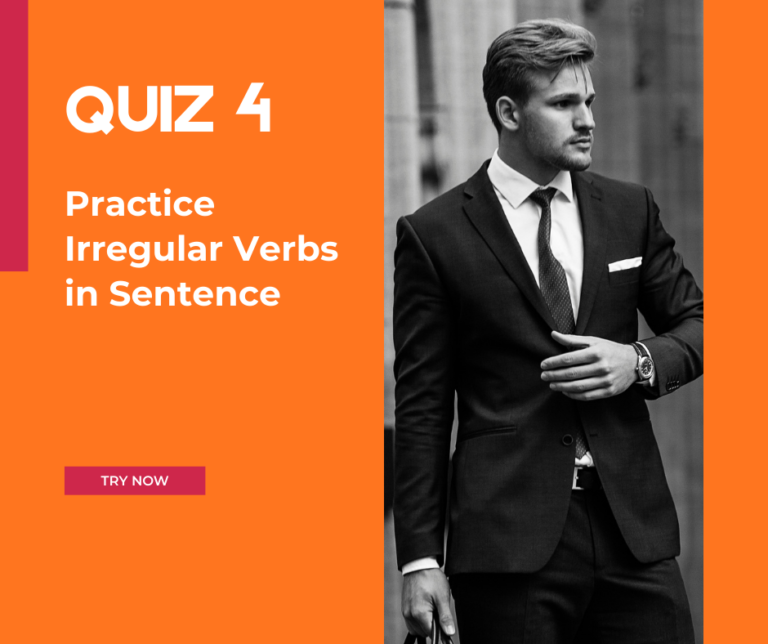
Present Perfect Tense — Exercise 4 (Questions with Full Explanations)
This Present Perfect practice set contains 10 carefully chosen questions that test have/has + past participle in real-world contexts (workplace, study, everyday life). Each question includes a short verb definition and detailed explanations for the correct option and for every incorrect option so you learn grammar and vocabulary together. The options are intentionally close to be challenging — read explanations after answering to deepen understanding.
Definition: Present Perfect (have/has + past participle or verb 3rd form)
- Form: have/has + past participle (e.g., I have finished; she has completed).
- Use: actions with relevance to the present (experiences, completed actions with present result, actions started in the past and continuing to now, life experiences, and actions with unspecified time).
- Keywords: already, yet, just, ever, never, so far, recently, lately often appear.
- Negatives/Questions: have/has not (haven’t/hasn’t) and Have/Has + subject + past participle?
- To learn more about it – Visit Here
Quiz Instructions
- Read each question and choose the best answer out of four given options.
- On top, header section of the quiz, you will see the “title of the quiz,’ ‘spending-time,’ ‘value of question in points,’ and ‘number of questions.”
- Below on footer, you will see Full Screen mode. As the name suggests, it covers the whole screen. It will save a lot of your time attempting the quiz.
- You can zoom the images given in the questions.
- After submitting the quiz, you can see your score and compare with other users.
- The Full Leaderboard link will take you to a page, where you can see all users attempts.
- Below the quiz box, there are explanation of each options. You can study and try again.
- Best of Luck!
Quiz Question, Answer and Explanation
Note: Do remember in the quiz box above, the questions and options will shuffle, so they won’t have the same sequence like 1, 2, 3, or A, B, C as below.
1. I ______ user feedback into the roadmap already.
A) have integrated B) integrated C) integrate D) integrating
Verb definition: integrate = to combine into a coherent whole.
Correct: A) have integrated
Why A is correct: Present perfect with already emphasizes that feedback has been included (present consequence).
Why B wrong: past is similar but less present-linked.
Why C wrong: simple present wrong.
Why D wrong: participle.
2. Has your manager ______ any comments on the draft?
A) left B) leave C) leaving D) leaves
Verb definition: leave (a comment) = to add notes or remarks.
Correct: A) left (used after Has: Has your manager left any comments? i.e., past participle)
Why A is correct: Present perfect question requires past participle left.
Why B wrong: base verb not correct after auxiliary.
Why C wrong: -ing.
Why D wrong: third-person present, wrong structure.
3. We ______ a proof-of-concept, and the stakeholders liked it.
A) have built B) built C) build D) building
Verb definition: build = to construct or develop.
Correct: A) have built
Why A is correct: Present perfect indicates completion relevant to the stakeholders’ opinion.
Why B wrong: past feasible but present perfect stresses the present relevance.
Why C wrong: simple present.
Why D wrong: participle.
4. She ______ an extensive report; can we present it tomorrow?
A) has prepared B) prepared C) prepares D) preparing
Verb definition: prepare = to make ready.
Correct: A) has prepared
Why A is correct: Present perfect shows readiness now.
Why B wrong: past is plausible but less linked to current readiness.
Why C wrong: simple present.
Why D wrong: -ing.
5. They ______ the error that caused the outage.
A) have identified B) identified C) identify D) identifying
Verb definition: identify = to find and name.
Correct: A) have identified
Why A is correct: Present perfect ties identification to the present fix or mitigation.
Why B wrong: past is possible but present perfect better highlights current relevance.
Why C wrong: simple present.
Why D wrong: participle.
6. I ______ connection with the vendor this morning.
A) have established B) established C) establish D) establishing
Verb definition: establish = to set up or begin formal contact.
Correct: A) have established
Why A is correct: Present perfect indicates that the connection was formed earlier and is relevant now.
Why B wrong: past simple less present-focused.
Why C wrong: simple present.
Why D wrong: -ing.
7. Have the auditors ______ the ledgers for discrepancies?
A) examined B) examine C) examining D) examines
Verb definition: examine = to inspect carefully.
Correct: A) examined (past participle after Have: Have they examined the ledgers?)
Why A is correct: Present perfect question uses past participle examined.
Why B wrong: base form incorrect after auxiliary.
Why C wrong: non-finite.
Why D wrong: wrong form.
8. We ______ the encryption keys and updated access permissions.
A) have rotated B) rotated C) rotate D) rotating
Verb definition: rotate = to change keys in regular intervals.
Correct: A) have rotated
Why A is correct: Present perfect indicates completed security action with present effect.
Why B wrong: past possible, present perfect emphasizes current state.
Why C wrong: simple present.
Why D wrong: -ing.
9. She ______ recent market trends and prepared a brief.
A) has analyzed B) analyzed C) analyzes D) analyzing
Verb definition: analyze = to examine data to draw conclusions.
Correct: A) has analyzed
Why A is correct: Present perfect connects analysis to the subsequent brief.
Why B wrong: past less explicitly linked.
Why C wrong: present habitual.
Why D wrong: participle.
10. They ______ vendor responses; the shortlist is ready.
A) have reviewed B) reviewed C) review D) reviewing
Verb definition: review = to evaluate responses.
Correct: A) have reviewed
Why A is correct: Present perfect indicates completion relevant to now (shortlist ready).
Why B wrong: past less present-linked.
Why C wrong: simple present.
Why D wrong: -ing.


